Wonu Veys travelled to Australia as part of an international collaborative project entitled Globalization, Photography, and Race: The Circulation and Return of Aboriginal Photographs in Europe. She has worked extensively with the photographic collections found within the Musée du quai Branly, but more specifically with pictures from the Museum of Ethnology.
The following is a blog account of Wonu’s travels that have been translated from Dutch to English.
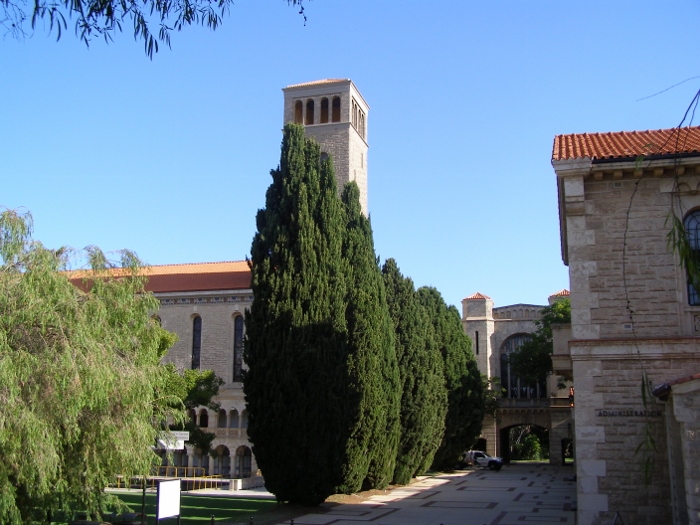
University of Western Australia
University of Western Australia (Monday, February 10th, 2014)
Perth, on the campus of the University of Western Australia starting my research trip.
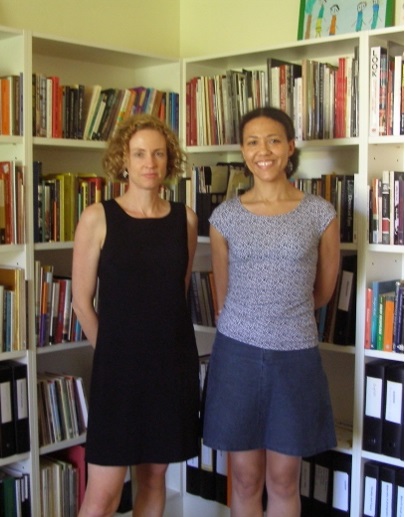
Professor Jane Lydon and Wonu Veys
The University was founded by John Winthrop Hackett in 1911 as the first “free university” of the British Commonwealth who wanted to offer equal opportunities to all social classes. It is high summer in Perth, and the temperature runs constantly around 30°C and by early afternoon a fresh sea breeze is blowing.
Although the campus caters to thousands of students, the grounds are also inhabited by a large population of galah’s (an Australian cockatoo) – they look like parrots but are grey with a pink breasts – and peacocks including a large number of male peacocks with their long, feathery tails. The peacocks will greet you at your office window every now and then!
Together with Professor Jane Lydon, the project leader of the Australian Research Council study, we prepared for my trip from Perth to Canberra and eventually onto Arnhem Land. My month will be mostly dedicated to finding additional research on a group of photos that were taken in Western Australia at the end of the nineteenth century, and then to research and share a collection of 470 photographs that were taken fifty years ago by the Dutch anthropologist Alex van der Leeden in Numbulwar, a settlement in Arnhem Land.
Rottnest Island – Wadjemup from prison to holiday Island (Tuesday, February 11, 2014)

Quokka at Rottnest Island, Western Australia
Rottnest Island got its name from the Dutch navigator Willem de Vlamingh because he thought that the many nests of the marsupials, known quokkas (Setonix brachyurus), which he found in 1696 on the island, were rats. So, “Rottenest” eventually became “Rottnest”.
The aboriginal name Wadjemup is almost never used, although the site is closely linked to the recent colonial Aboriginal history. Around 6,500 years ago, people lived on the island before it was closed off from the mainland by the rising sea levels.
The Island still plays an important role for the Noongar Aboriginal communities as a place where spirits dwell. A painful chapter came in 1838 when the first 10 Aboriginal men were sent as prisoners to the island. In 1931, the prison closed its doors. Sadly during that period 369 Aboriginal men, mostly leaders and bearers of cultural knowledge lost their lives. Nowadays hundreds of tourists visit the island daily, enjoying the beautiful scenery and accommodations for holidaymakers.
Although the Noongar Cirlcle of Elders and the Rottnest Island Deaths Group Aboriginal Corporation continue to make sure that the public is educated on the Aboriginal history of Rottnest and that tourists are well aware of sacred places within the landscape.
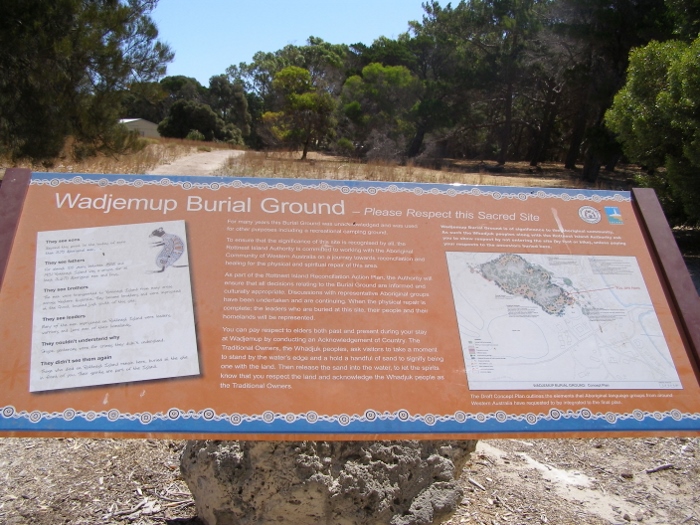
Wadjemup, Rottnest Island
The Berndt Museum of Anthropology (Wednesday, February 12th, 2014)
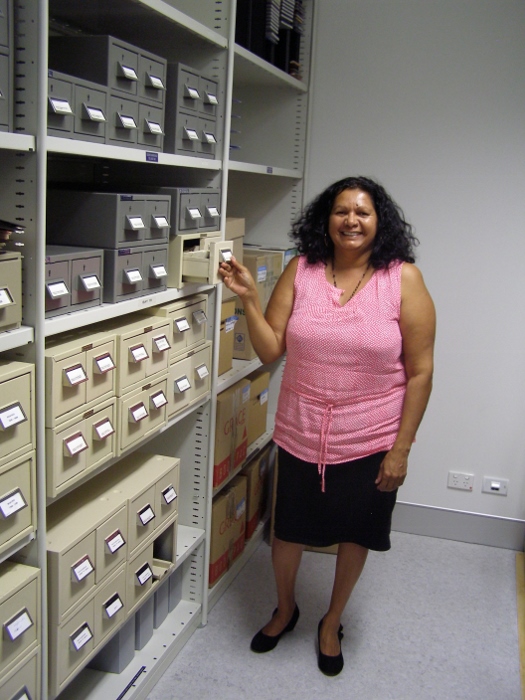
Barbara Bynder, The Berndt Museum of Anthropology
The Berndt Museum of Anthropology was named after its founders Ronald and Catherine Berndt, in 1976, and is actually a University Museum where a wealth of Aboriginal art and artifact collections is kept. I was particularly interested in their small collection from Melanesia, particularly Papua New Guinea.
I had an appointment with Ted Snell, the Director of the Cultural Precinct, which includes all university museums and Barbara Bynder, Deputy Director and Curator of the Berndt Museum. During this meeting I came to know a lot about how Aboriginal communities deal with photographs. Barbara Bynder, a Noongar woman told me that many older people are a lot more cautious than some younger Noongar people when it comes to what pictures can and cannot be seen by the general public.
In general, the Museum works with the different communities and allows them access to the various collections that has beneficial outcomes for both the museum and communities involved.
The Western Australian Museum (Thursday, February 13th, 2014)
In the Western Australian Museum, Dr. Moya Smith, Head of Department of Anthropology and Archeology and Mr. Ross Chadwick, the Curator in the Department of Anthropology and Archeology greeted me. The museum houses both skeletons of wildlife and humans.
The setting up of the Aboriginal Australia arrangement has been held up for more than four years. With every photo and every object Aboriginal owners were contacted to obtain the necessary permissions. Moya and Ross, I also discussed a set of photographs that I had found in Paris, at the Musée du Quai Branly, which was sent at the beginning of the twentieth century by the Western Australian Museum in the former Musée de l’Homme.
I suspected that the pictures were taken by the Australian collector John Thomas Tunney (1870-1929) who was appointed in 1895 as the museum collector. His task was to build natural history and ethnographic collections for the growing Western Australian Museum. When Tunney received a camera in 1898 from his museum director Bernard Woodward, he did not know how to use it. Luckily he got lessons during one of his collecting expeditions. He limited his photos to portraits of people in Coolgardie, Carnarvon, Broome Beagle Bay, Murchison, Yalgoo, Nullagine, Northam, Ashburton River, Derby and Bunbury to the front and back view and profile shots.
I was happy to hear that my suspicions were confirmed. The photos were indeed taken by John Thomas Tunney. Moreover, both Moya and Ross were not aware that any of Tunney’s prints had ever left Austrralia and were now in Cambridge and Paris. This study lifts a corner of the veil on the extensive networks that existed between museums around the world where objects and photos were exchanged and the turn of the nineteenth century.
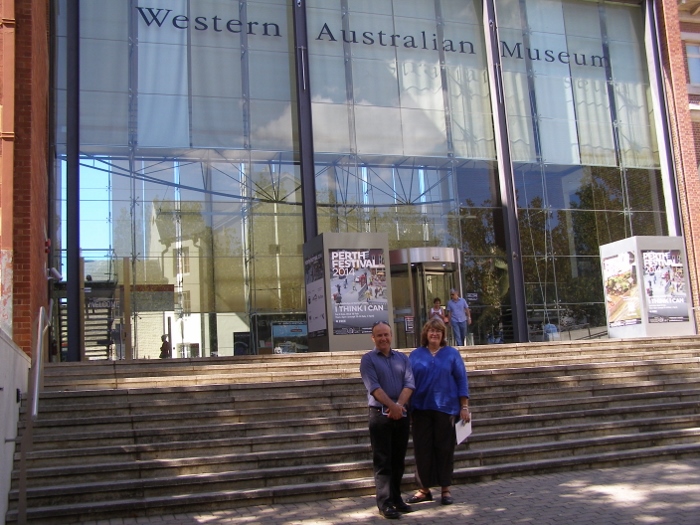
Moya Smith and Ross Chadwick, The Western Australian Museum
The Storylines project in the State Library of Western Australia (Thursday, February 13th, 2014)
Damien Webb and John Geijsman have been working on a great project that focused solely on the Aboriginal photographic and some audio collections housed in the State Library of Western Australia. The project is called “Storylines” and the system allows Aboriginal people’s from all over Western Australia to find family names, places of significance and view recorded footage and photographic archives of family and community members. The programme is highly interactive and intuitive and is continually being updated to provide more information for its users.
For those wanting to visit the site themselves you can enter as a guest at: http://storylines.slwa.wa.gov.au
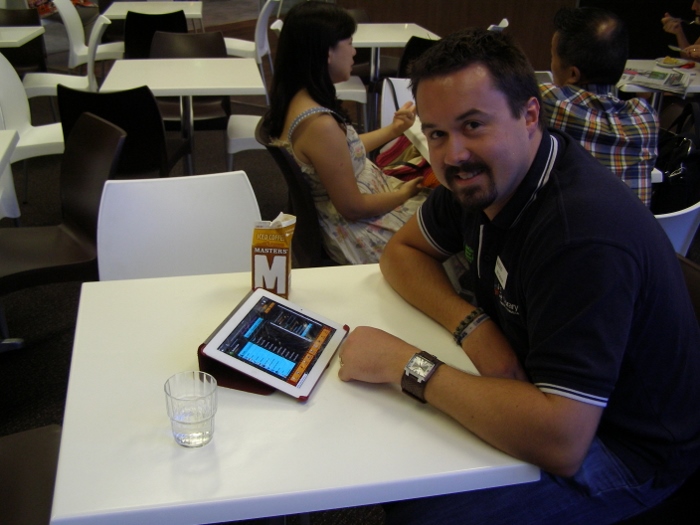
John Geijsman